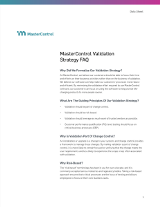
GxP Lifeline
An Expert Explains Data Integrity and Organizational Excellence – Part Two
Editor’s note: In this two-part series, compliance and data integrity expert Matt Brawner answers questions to connect the dots between data integrity and organizational excellence. In part one, he explains the two concepts, current trends and mistakes to avoid. In part two, he provides insight into specific regulations.
Q. Can you start by talking about data integrity regulations as they relate to customers?
I touched on this a bit last time, and before we dive into regulations it’s important for life sciences companies to understand quality in the eyes of their customer – the patient, not the regulator. In other words, companies must align their efforts with the voice of the customer. Aligning their efforts with customer needs. Many companies refer to the ‘parts’ of their product that deliver on customer needs as critical quality attributes (CQA). Defining these CQAs is key step in aligning your organization with the needs of your customer. With CQAs defined, now process improvement initiatives can be prioritized based on the greatest impact to the customer. This ‘true north’ brings alignment to departments across the organization and eliminates initiatives that just don’t add value.
Having said that, a customer expectation is that life sciences companies are adhering to all the appropriate regulations and should be included as part of defining CQAs.
Q. Are there particular data integrity regulations or guidances that companies commonly overlook or struggle with?
A. When providing training I commonly get the following question from people struggling with data integrity: “What do 21 CFR Part 11 (Electronic Records; Electronic Signatures) and data integrity mean with respect to each other?”.
The interesting thing is that ERES and Data Integrity are closely related. Both are even enforced through the predicate rules (e.g. 21 CFR Part 211). However, to be brief, there are significant differences, chief among them being the approach of each regulation. Part 11 takes the approach of assuring the quality of data within systems considering paper equivalency. Data integrity assures the quality of data by specifying characteristics of data having integrity (ALCOA). Data integrity has a broader scope as it is not limited to data within electronic systems.
The biggest thing that companies are overlooking with respect to the data integrity guidance documents is the significant benefit of using a data lifecycle. Failing to use a data life lifecycle in your data integrity assurance approach doesn’t necessarily result in a compliance deficiency, but you are missing out on a very efficient way to assure data integrity. The lifecycle is so important because it allows standard controls to be developed based on where data is within the lifecycle. This standardization increases consistency across an organization and drastically reduces the workload in qualifying each system.
Q. How can an organization avoid these mistakes?
The best way to avoid the pitfalls associated with data integrity on your path to organizational Excellence is alignment. The tools and practices mentioned earlier all contribute to aligning your people, processes, and systems toward a common goal, the goal of quality and value for your customer.
People should be empowered with the knowledge they need to contribute through the increased understanding they have gained through process mapping and understanding the rationale for “why we do it this way.”
Processes should be understood through mapping and aligned to deliver customer needs, critical quality attributes, with as little waste and variation as possible.
Finally, Systems should be selected and configured to reflect your business processes and deliver your needs. We live in an interesting technological time where IT systems (CMS, ERP, QMS) can do almost anything, but without proper configuration they are as useful as a mobile phone without any contacts stored. Take the time to select the right vendor and the right system, and ensure it is configured to reflect your unique processes. After all, what makes you unique is likely what has made you successful.

